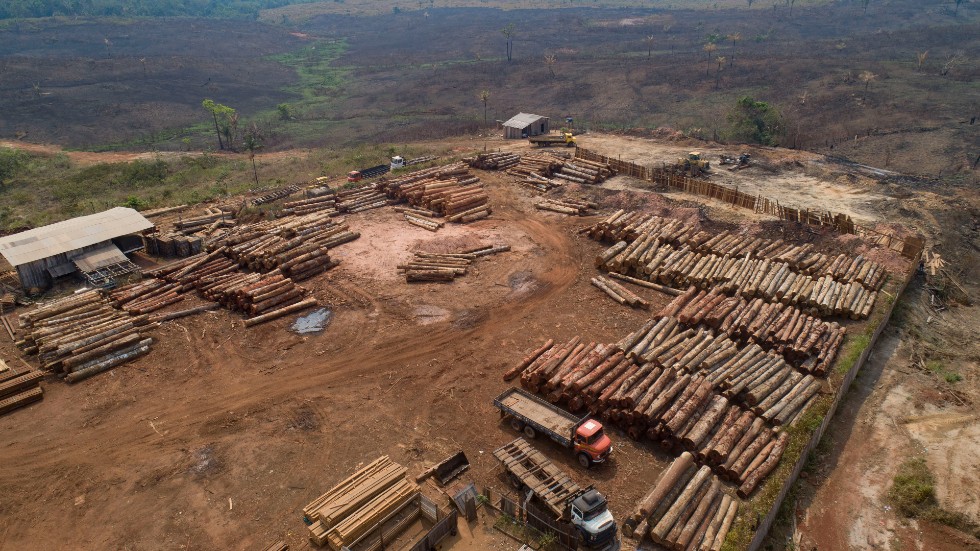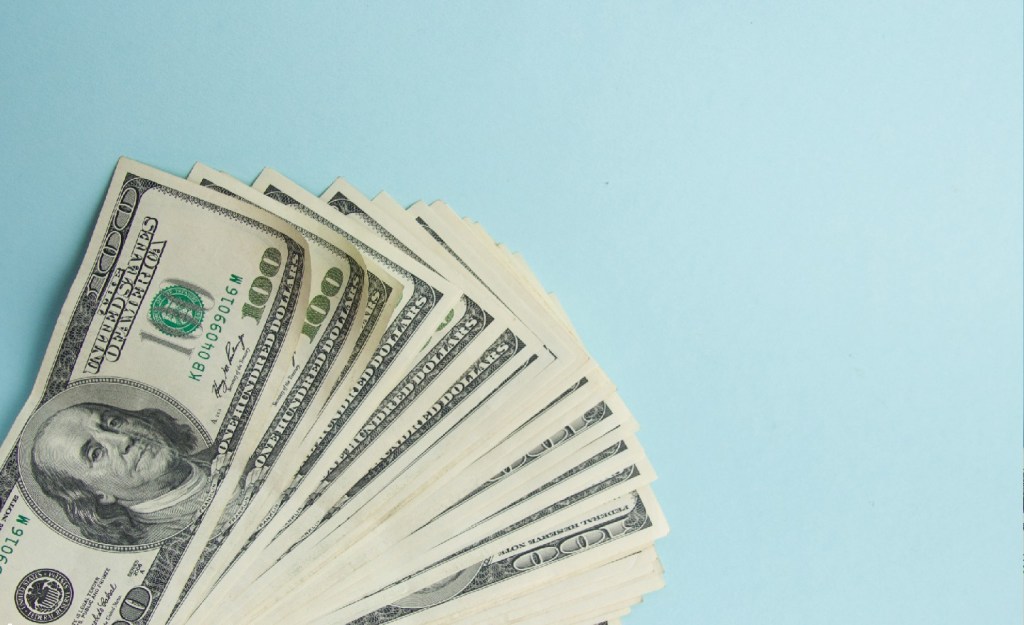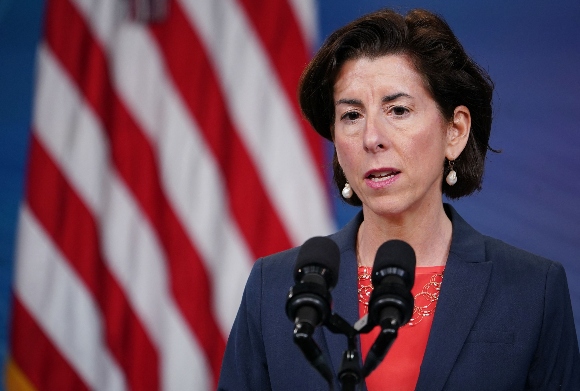Equilibrium/Sustainability — Presented by Southern Company — Shipwreck sends waste thousands of miles

Today is Tuesday. Welcome to Equilibrium, a newsletter that tracks the growing global battle over the future of sustainability. Subscribe here: digital-stage.thehill.com/newsletter-signup.
When the X-Press Pearl container ship burned and sank in the Indian Ocean near Sri Lanka, it released a cargo more destructive than all the fuel and caustic chemicals on board: 87 containers of lentil-sized “nurdles,” according to a United Nations report.
A “nurdle” is a pre-production plastic pellet — beads of specific polymers used as the building blocks of our plasticky world. They are the largest source of microplastics in the ocean, “found in the bodies of dead dolphins and the mouths of fish,” The Guardian explained.
Nurdles from the 1,680-ton spill — the second largest plastic spill in history — have washed up in drifts up to 6 feet deep on beaches from Indonesia to Somalia, according to a report in Sri-Lanka based Groundviews.
These microplastic pellets “act as toxic sponges,” attracting hydrophobic chemicals — those that repel water — to gather on their surfaces, Tom Gammage of the Environmental Investigation Agency told The Guardian.
Today we’re looking at another part of the globe and the role that major fashion brands play in Amazon deforestation — and why attempts to get dirty leather out of their supply chains have failed. Then we look at the coverage of a wave of California retail crimes, which critics say distracts from a far greater crime we ignore.
For Equilibrium, we are Saul Elbein and Sharon Udasin. Please send tips or comments to Saul at selbein@digital-stage.thehill.com or Sharon at sudasin@digital-stage.thehill.com. Follow us on Twitter: @saul_elbein and @sharonudasin.
Let’s get to it.
Major brands may be tied to deforestation

More than 100 global fashion brands may have ties to Amazon deforestation, though none of these companies have deliberately chosen to source their materials from such activity, a new report has found.
The brands — which include popular labels like H&M, Nike, Ralph Lauren, Adidas and Zara — work with manufacturers and leather tanneries “that source from opaque supply chains and companies that have known links to cattle raised on recently deforested Amazon land,” a news release accompanying the report said.
First words: “Our study demonstrates that fashion industry commitments to not use deforestation leather have been ineffective,” Greg Higgs, a report author and director of research and investigations at the Stand.earth Research Group, told Equilibrium.
The study — called “Nowhere to Hide” — was conducted by the supply chain research firm Stand.earth, in partnership with the climate justice nonprofit Slow Factory.
An overview: About 16.5 million acres of forests were lost in the Brazilian Amazon rainforest biome over the last decade, the report stated, citing Brazilian government data. Of that loss, the cattle industry has been “the single largest driver,” the report added, referencing a study from the World Resources Institute.
Cattle accounted for 36 percent of tree cover loss globally from 2001 to 2015, while about 45 percent of forests lost to cattle during that time frame were located in Brazil, according to the World Resources Institute. Brazil specifically has the largest cattle herd in the world, although 80 percent of Brazilian bovine leather is exported, the report noted.
What went into the report? Stand.earth researchers analyzed about 500,000 rows of customs data — from Brazil, Vietnam and other countries — which they cross-referenced with data collected from sources like U.S. vessel manifest data, leather processor websites and annual reports and fashion brand voluntary supplier disclosure lists.
The report primarily focused on Brazil’s largest leather exporter, JBS, and its supply chains, which the researchers said were connected to more than 7 million acres of deforestation over the past decade. More than 50 of the brands have multiple supply-chain links to JBS, as The Guardian originally reported.
TOUGH TO TRACK
The report accused some brands of deciding to “hide behind the Leather Working Group,” a nonprofit that provides environmental certification for leather manufacturers. The researchers criticized the group for only rating tanneries based on their abilities to trace leather back to slaughterhouses, rather than all the way back to farms.
Cows raised on deforested plots are often sold to ranchers, who then mix them with other cows on legal, non-deforested plots and sell the animals to slaughterhouses, where their hides blend into the broader supply, as Equilibrium previously reported.
JBS refutes claims: In response to the new findings, JBS said in a statement that the study “does not prove a link between products sold by JBS to deforestation in the Amazon,” and that the company uses satellite imagery to monitor suppliers in every biome.
“JBS has no tolerance for illegal deforestation, forced labor, misuse of indigenous lands, conservation units or violations of environmental embargoes,” the statement said, adding the company has stopped more than 14,000 supplier farms that failed to comply with JBS standards.
Companies react: Nike said in a statement that it “has a strict policy against leather sourced in the Amazon Biome” and requires all leather suppliers to comply with the Leather Working Group protocol.
H&M, meanwhile, said it has banned Brazilian leather since 2019, and that the company is “in direct dialogue with all our leather suppliers to ensure that our policy is being fully implemented.” Acknowledging “the low transparency” the whole leather supply chain faces, H&M stressed the importance of engaging with industry to increase “traceability down to farm level.”
Zara and Ralph Lauren did not immediately respond to requests for comments.
Last words: Going forward, Higgs told Equilibrium that he and his co-authors “hope that fashion brands will move beyond words to take bold concrete actions that are in line with the severity of the climate crisis.”
“Fashion is a trillion-dollar global industry,” he added. “We expect that with their level of revenue, fashion companies should be able to find creative solutions to end their role in deforestation and help move the world towards a zero-carbon future.”
To read the full story, please click here.
A MESSAGE FROM SOUTHERN COMPANY
At Southern Company, we achieved our interim net zero energy goal ten years early. Today, we continue our work toward a net zero future. Learn more.
Retail crime draws attention to deeper threat

A series of high-dollar thefts from California department and retail stores, in which gangs of thieves have grabbed hundreds of thousands of dollars in merchandise, is leading to calls for a crackdown.
But while dramatic, the focus on smash-and-grabs may distract from a far more commonplace — and potentially larger — sort of retail theft, which involves employees themselves.
First steps: There have been more than a week of heists across California and Chicago: groups of 30 to 80 people rushing into stores like Walgreens, Nordstroms or clothiers Yves Saint Laurent and Armani, and running out to waiting cars with what they could grab, The New York Times reported.
“Their plan was to overwhelm us,” San Francisco police chief Bill Scott told reporters in the aftermath of San Francisco’s first high-profile theft of luxury stores in the city’s Union Square.
The day after his calls for more enforcement, according to the Times, as many as 80 people raided a Nordstrom’s department store in Walnut Creek, east of San Francisco.
“We need to make an example out of these folks,” Gov. Gavin Newsom said in a statement last Monday. The burglars had taken more than material goods — which also pointed to a deeper sustainability concern. The thieves, Newsom said, “are stealing a sense of place and confidence, and that’s why you got to get serious about it.”
“These are not petty thefts,” added San Francisco’s liberal district attorney, Chesa Boudin, in a press conference, announcing that he was filing felony charges against nine suspects linked to the Union Square raid. “This is felony conduct.”
A political liability: Newsom and Boudin are facing an assault from political opponents — including conservative Democrats — who blame them for the thefts, as well as from political interest groups seeking to make crime “2022’s hot-button election issue,” according to The Mercury News.
The outlet noted that conservatives are focusing their assault on Proposition 47, a California referendum that reclassified many felonies — like nonviolent thefts involving less than $950 — as misdemeanors, according to a California fact sheet.
The proposition is getting rolled into the broader culture wars. Los Angeles County Sheriff Alex Villanueva told the conservative Washington Examiner that progressives had tricked voters into backing it.
“People are getting tired of the far-left ‘woke’ crowd … and the narrative that we have to support lawlessness or we are racist,” he said.
WHICH CRIMES GOT COVERED?
A hidden crime: Judd Legum, founding editor-in-chief of the site ThinkProgress who now runs the newsletter Popular Information, argues that the focus on retail crime — however “brazen” or dramatic — belies a far more common form of retail crime: wage theft.
In the 10 most populous U.S. states, millions of low-wage workers are robbed of $8 billion a year by their employers — about a quarter of their wages — due to the failure to meet the minimum wages, according to a 2017 study by the left-leaning Economic Policy Institute.
If those proportions hold true for the country as a whole, the report found, $15 billion in unpaid time is taken every year from some of the country’s most vulnerable workers — more than the total of all 2019 property crimes combined ($13.3 billion), according to the FBI.
What crime gets covered? The fallout from a video taken in June shows the discrepancy between how society treats one form of crime versus the other. In June, a man in a San Francisco Walgreens filled a garbage bag with merchandise and rode his bike out of the store, before being arrested and charged for stealing less than $950 in merchandise, Popular Information noted.
In doing so, the suspect provided the fuel for 309 news stories, many with headlines like “Thieves now mock the rule of law in ‘progressive’ cities,” Popular Information noted, citing data from left-leaning media watchdog FAIR.
So? In November 2020, Walgreens settled a class action suit, agreeing to pay almost $3 million wages it had failed to pay its employees. This finding generated precisely one story, in Bloomberg Law, FAIR noted.
That discrepancy has consequences. The decision by media and police to focus attention on retail property crime or “violent crime” distracts from other crimes — like wage theft and air pollution — that kill or steal from far more people, in far greater magnitudes, argued civil rights activist Alec Karakatsanis.
Last words: “Much of deadly U.S. air and water pollution is also criminal, but ‘law enforcement’ chooses to ignore it, and thus so do most journalists,” Karakatsanis wrote.
VIRTUAL EVENT ANNOUNCEMENT
Regulating Cannabis — Wednesday, December 1 at 1:00 PM ET
A MESSAGE FROM SOUTHERN COMPANY
At Southern Company, we achieved our interim net zero energy goal ten years early. Today, we continue our work toward a net zero future. Learn more.
Transport Tuesday

A semiconductor deficit; low Nissan EV sales; and America’s lagging road repairs.
U.S. will miss EV targets without investments in semiconductors: commerce secretary
- Without urgent investments in the semiconductor manufacturing industry, the U.S. will not be able to meet the Biden administration’s goals of rapid electric vehicle adoption, Commerce Secretary Gina Raimondo told journalists in Detroit on Monday, as reported by The Washington Post.
- Raimondo urged Congress to pass the Chip Act, which would approve $52 billion in subsidies for domestic semiconductor production and research, according to the Post.
- While the Biden administration has set goals to make half of all new cars sold in 2030 zero-emissions, Raimondo said that “we are wasting time, precious time, every day that the Chips Act isn’t passed,” according to the Post.
Early EV adopter Nissan rejects bold EV projections
- Japanese carmaker Nissan — which started selling its Leaf electric hatchback in 2010 — announced on Monday that it would spend about $17.5 billion on 20 new battery-powered models, aiming for half of its sales to come from electric or hybrid models by 2030, The Wall Street Journal reported.
- While Nissan fell far short of its initial goals to sell 1.5 million electric vehicles by 2016, the company has become more optimistic about consumer readiness for EV adoption, according to the Journal.
- Nonetheless, Nissan said that conditions are too uncertain in both the U.S. and Japan to make any concrete predictions, the Journal reported. As a result, the company isn’t detailing what percentage of vehicle sales in 2030 will come from purely electric models.
- “It’s not conservative. It’s sensible. It’s grounded,” Nissan’s Chief Operating Officer Ashwani Gupta told the Journal. “After what all happened, we are sensible, and our message has to be credible.”
Infrastructure adaptation lags behind changing climate
- The $1.2 trillion in bipartisan road-and-bridge repair is only “a sliver” of the long-term federal investment needed to stave off the impacts of climate change, The Washington Post reported.
- Across the country, pavement is washing out and concrete buckling under both slow, chronic erosion and sudden, punctuated disasters.
- With state government adaptation efforts lagging behind the speed of change, repairing deteriorating infrastructure often falls in the hands of cash-strapped local governments.
That’s it for today. Please visit The Hill’s sustainability section online for the web version of this newsletter and more stories. We’ll see you Wednesday.{mosads}
Copyright 2023 Nexstar Media Inc. All rights reserved. This material may not be published, broadcast, rewritten, or redistributed. Regular the hill posts









